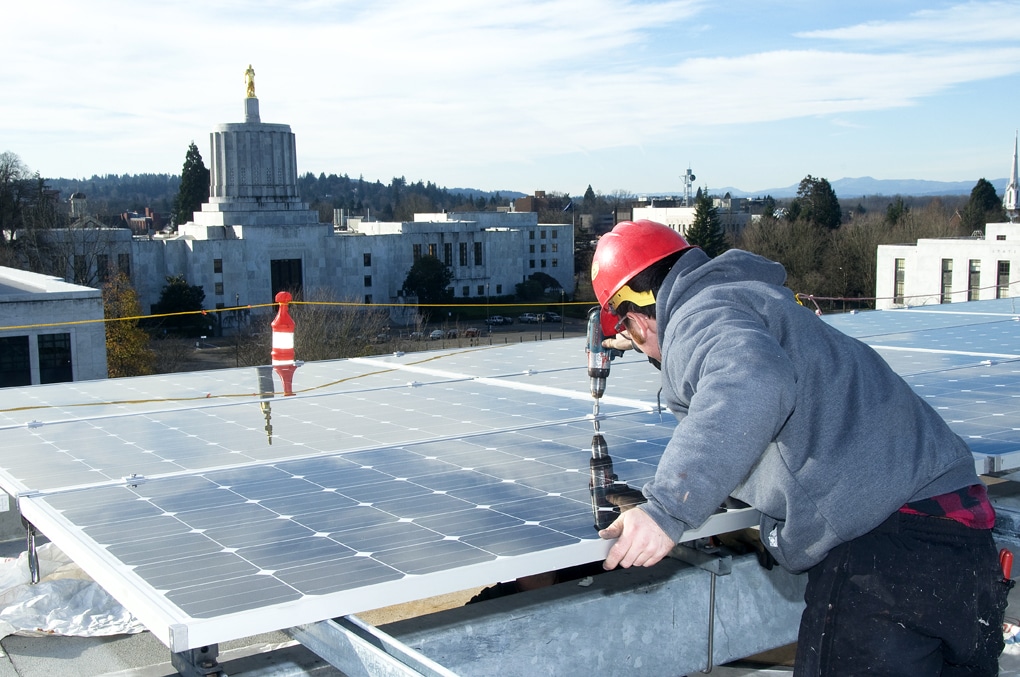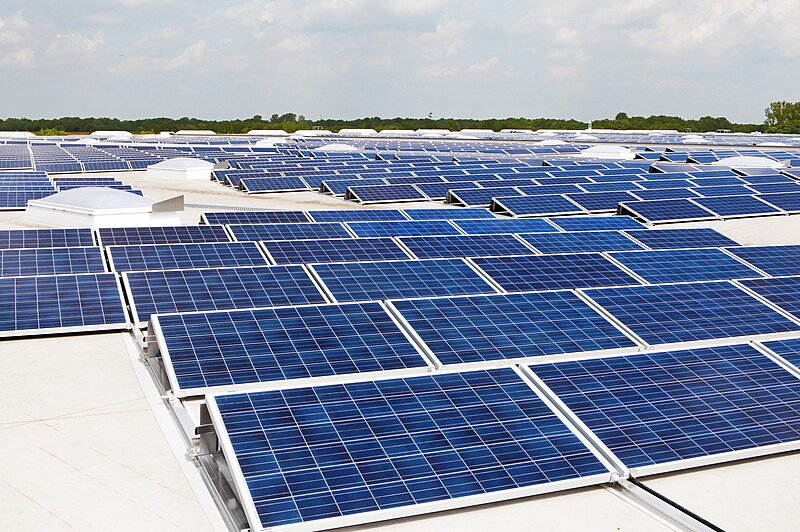A solar cell, also called a photovoltaic (PV) cell, is the smallest and basic element of sunlight-into-electricity conversion - what did you expect to see there? The idea at its heart is the photovoltaic effect; light strikes a semiconductor material (silicon or another of many), and you have electricity. The conversion efficiency of photovoltaic cells is usually from 15 to 22%, and advanced monocrystalline silicon hits up to an effective efficiency of more than 26.1%. A 1.6m squared photovoltaic panel would provide around "at most" 1500 kilowatt-hours a year of electricity, satisfying some domestic needs if an average-sized household has one installed – above the lower estimate, which says it could be enough for all their power demands except central heating and cooking. The installation should be such that they have good contact with sunlight and ensure there is no shadow.
Basic structure of photovoltaic cells
A photovoltaic cell contains a main structure that is usually one or more layers of modified silicon (Silicon-based materials are the most typical semiconductor used in construction). And because monocrystalline silicon is a perfect crystal structure, it can reach laboratory photovoltaic conversion efficiency of up to 26.1%, the highest that has ever been measured at present. In comparison, polycrystalline silicon cells are less efficient than monocrystalline solar panels, with an efficiency range of between 15%-20%, but their production cost is lower, which makes them more popular for large-scale use.
In some applications, especially new ones, cadmium telluride and other thin film materials, cadmium telluride cells work better under hot climates and are mostly used in tropical areas. This kind of thin-film cell had a global installed capacity of more than 50 GW in 2022.
Working principle of photovoltaic cells
The photovoltaic effect is actually the basic working principle of photovoltaic cells. When sunlight shines on the face of a Photovoltaic cell, photons are absorbed by semiconductor material and the charge carriers are excited from the valence band to the conduction band. In this process, electrons combine with holes, respectively, electron-hole pairs. This allows a current of guiding electrons in this electric field to flow through the cell and also into an external circuit. In practice, a typical photovoltaic panel has an output of between 150 and 200 watts per square meter under full sunlight.
Specifically, a 1.6-meter photovoltaic panel operates at around to generate about 320 watts of power in ideal circumstances. This panel can produce around 1,200 to 1,500 kilowatt hours a year — more than half of some households' electricity needs, depending on location and sunlight conditions.
Factors affecting photovoltaic cell efficiency
This efficiency depends on many factors, some of which may need to be improved. It all boils down to how well the material can absorb light. To be specific, the light absorption efficiency of monocrystalline silicon can reach more than 80%; however, as the temperature rises by every degree Celsius, the cell's efficiency lowers by about 0.4%-0.5%. For performance reasons, photovoltaic cells are normally installed with some ventilation or cooling mechanisms (such as the ones in re-circulating water tubes) to avoid overheating, which can adversely affect energy production.
Furthermore, the drop in efficiency is also due to reflection losses. Applications of anti-reflective layers: The reflecting rate decreases from 30% (untreated) to less than %10 by coating the cell surface. Although no single material provides a perfect solution, some photovoltaic cells take advantage of nanostructured anti-reflective coatings to cut reflection rates above 5% — and boost their overall efficiency by 3%-4%.
Practical applications of photovoltaic cells
Photovoltaic cells are widely applied in the energy sector, particularly in the context of the growing demand for green energy. By 2023, more than 120 countries worldwide had adopted photovoltaic cells as a primary source of renewable energy. For example, solar power accounts for more than 10% of Germany's total electricity, with some used to support industrial and commercial operations, while the rest is for household self-sufficient power generation.
Photovoltaic cells also play a crucial role in remote areas. In Africa, for instance, millions of households use small photovoltaic systems to power their household appliances, providing not only clean energy but also solving electricity supply issues in these regions. Data shows that the global off-grid photovoltaic system market reached $2 billion in 2022, and it is expected to grow at an annual rate of over 15% over the next five years.



